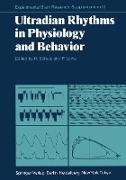Ultradian Rhythms in Physiology and Behavior
BücherAngebote / Angebote:
Historical Perspective In 1842, in a paper entitled "Further Development of a General Law of Vital Periodicity", which was part of a series of seven Lancet papers on periodicities in health and disease, Thomas Laycock wrote: "As everything finite must have a period within which its existence is circumscribed, so every period so circumscribing the finite, being a measure of time, must be divisible into lesser periods. But it has always been found easier to reason from generals to particulars than to ascend from particulars to generals, especially in questions in volving the phenomena of life" (p. 423). From a historical perspec tive, Laycock's insight indeed anticipated the progress of chronobio logic research. In spite of the abundant evidence pointing at the existence of short-term rhythms with periodicities much shorter than 24 hours, termed "ultradian" rhythms after Halberg (1964), it has gen erally been found much easier to investigate circadian rather than uI tradian rhythms. In m~st cases, ultradian rhythms have been ignored, or dismissed as insignificant phenomena, even in cases where they could be easily "eyeballed" in the data. Laycock himself believed that the most basic periodicity in vital phenomena was 12 hours. Short-term fluctuations in the levels of certain behaviors, which could not be accounted for by external stimulation or by internal stimuli, have been known to ethologists and other observers of animal behavior for many years.
Folgt in ca. 10 Arbeitstagen
